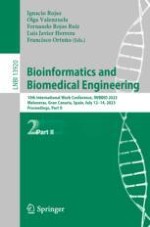2023 | OriginalPaper | Buchkapitel
Relation Predictions in Comorbid Disease Centric Knowledge Graph Using Heterogeneous GNN Models
verfasst von : Saikat Biswas, Koushiki Dasgupta Chaudhuri, Pabitra Mitra, Krothapalli Sreenivasa Rao
Erschienen in: Bioinformatics and Biomedical Engineering
Verlag: Springer Nature Switzerland
Aktivieren Sie unsere intelligente Suche, um passende Fachinhalte oder Patente zu finden.
Wählen Sie Textabschnitte aus um mit Künstlicher Intelligenz passenden Patente zu finden. powered by
Markieren Sie Textabschnitte, um KI-gestützt weitere passende Inhalte zu finden. powered by
